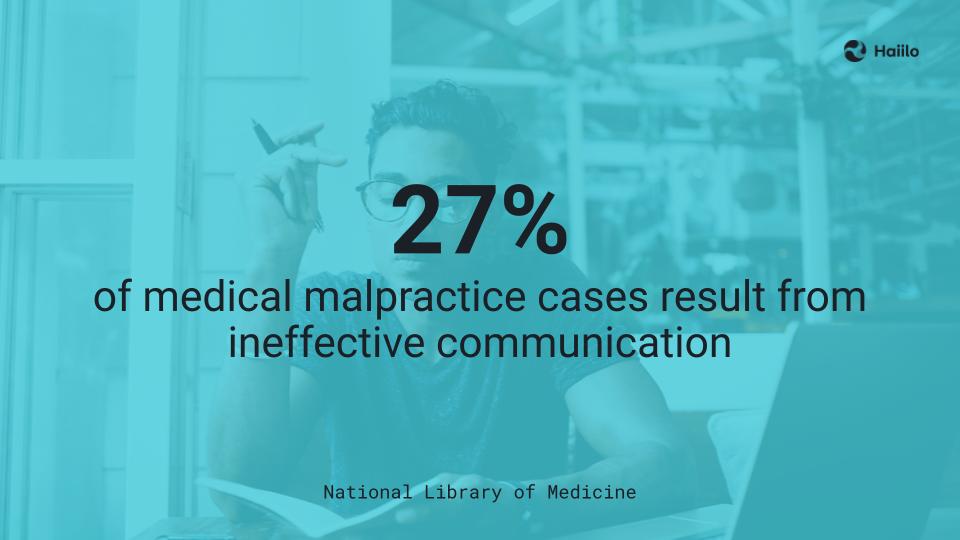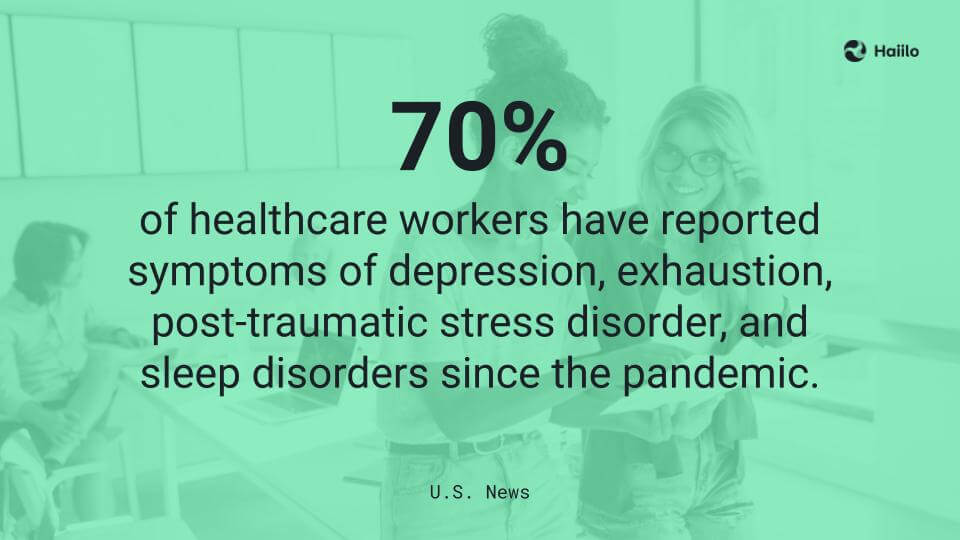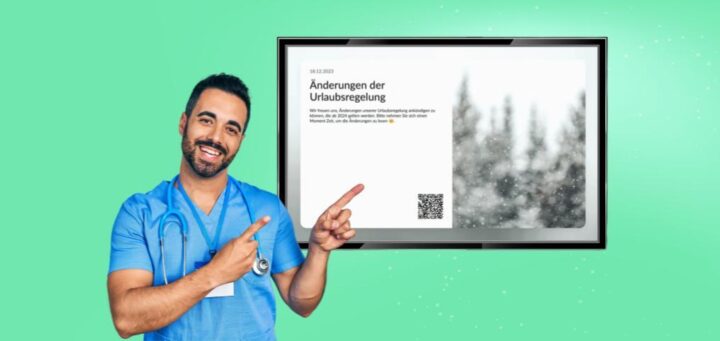Internal communications in healthcare pose a unique set of challenges for organizations. It is essential to ensure that communication between different departments and staff levels is efficient, timely, and effective. The best internal communications practices promote collaboration, provide clear guidance, and help maintain patient safety.
This article will cover the internal communication challenges most healthcare facilities face. We’ll also provide an in-depth analysis on the best practices these facilities can employ to enable seamless communication in order to deliver safe, efficient care to all patients.
Internal Communication Challenges in Healthcare
Poor communication in healthcare can lead to mistakes and omissions that can have dire consequences for patients. In fact, it’s estimated that 27% of medical malpractice cases result from ineffective communication. To avoid such cases, organizations must prioritize winning communications strategies and utilize effective practices within their operations.
Healthcare is a complex labyrinth with many stakeholders, each with their own communication needs and challenges. The business of healthcare involves providing the right care, but it also includes specific organizational goals that often require precise coordination. As such, the internal communication process between healthcare team members can be complex.
Understanding these daunting workplace communication challenges is vital, enabling healthcare providers to effectively care for patients while maintaining organizational efficiency and avoiding costly pitfalls. Here we discuss the various communication challenges that can arise within a healthcare setting.

Outdated Communication Technology
Almost 80% of doctors in the U.S. still use pagers. Although pagers are effective in hospitals for emergencies and protect patient information, they’re inefficient and outdated.
According to research, old communication technologies cost hospitals $8 billion annually. However, you’ll find that most healthcare facilities are still holding onto antiquated methods of communication, like pagers, fax machines, and outdated phone systems. These primitive tools lack the scalability and flexibility a modern healthcare environment needs.
Break down the silos and boost the information flow in healthcare with Haiilo!
For example, a pager system is too limited to enable efficient communication between doctors, nurses, and other care providers. It does not support two-way communication and is difficult to track. On the other hand, modern internal communication tools can enable real-time information flow as well as support quick decision-making. This is key to ensuring patient safety and delivering better healthcare outcomes.
Furthermore, outdated communication methods can make it difficult to attract and retain millennial and Gen Z workers. Younger healthcare workers are accustomed to modern, flexible communication tools and expect their employers to provide them with such an experience.
Lack of Standardized Internal Communication Plan
A standardized communication plan promotes effective communication between different departments and staff levels in an organization. It helps ensure everyone is on the same page so all stakeholders know the latest developments within their respective areas. Without this structure, communication can be chaotic, inefficient, and disorganized.
Unfortunately, many healthcare organizations lack a standardized internal communicationplan, resulting in miscommunications and misunderstandings. This can be seen through the findings of Joint Commission International, which showed that inadequate handovers are a factor in 80% of all adverse events, such as wrong procedures, treatment delays, and medication errors.
A internal communication plan within a healthcare setting should clearly define the roles and responsibilities of all stakeholders and set out protocols for communication and decision-making. This structure should also ensure that everyone is informed about any changes in policies or practices to avoid miscommunications.

Disengaged Workforce
Employee engagement in healthcare facilities is on the decline. According to a Gallup poll, healthcare employees’ engagement levels dropped 12 percentage points between 2021 and 2022.
A disengaged workforce means lower morale and productivity levels, higher turnover rates, and a decrease in the quality of care for patients. This can be caused by poor internal communication protocols that do not effectively bridge the gap between management, workers, and patients.
Poor communication can lead to misunderstandings about job expectations and roles within the organization. To ensure that they foster an engaged and productive workforce, healthcare organizations must build stronger internal communication practices that promote a clear understanding. This includes:
- Having an open dialogue on expectations between workers and managers
- Providing feedback mechanisms such as surveys or task trackers
- Fostering collaboration through techniques such as brainstorming sessions
- Encouraging team-building activities like social events or volunteer opportunities
Information Silos
Information silos are isolated pockets of information that result from a lack of effective communication between departments. They foster an environment of restricted communication and prevent data from being shared promptly across departments.
This restriction limits knowledge sharing, resulting in significant delays in decision-making, unnecessary redundancies across the board, and fragmentary approaches to patient care. Information silos also discourage innovative solutions since those seeking new approaches must often navigate multiple layers of bureaucracy and top-down hierarchies to get approval for their ideas.
For internal communications in healthcare to be effective, there needs to be an effort to break down these information silos in favor of more open and accessible systems — systems that can provide a better flow of data and encourage cross-departmental collaboration.
Information Overload
It’s no secret that managing information overload can be challenging in the healthcare industry. With so much data coming from multiple sources, it can be hard to know what is essential and what isn’t.
The reality is that emails and other important messages easily get lost in this information overload. In fact, studies show that the average open rate of emails sent within the healthcare industry is only 39%, meaning many important messages don’t even reach their intended targets.
This can seriously affect patient care and organizational planning, leading to obstructions and delays since teams aren’t properly informed. Managers need to consider what they are communicating and how they communicate it if they want their messages to be heard.
Best Practices for Internal Communications in Healthcare
Getting the most out of your internal communications requires staying on top of best practices related to technology, information flow, and alignment. With the right approach, healthcare facilities can use optimization techniques to create a connected workforce that ultimately helps improve patient satisfaction. This section provides insights into the top internal communication strategies that can help you navigate these challenges effectively.
Use One Platform for All Communications
Bringing communications together in one platform means less risk of miscommunication. Without such a hub, information could circulate through different mediums — emails, text messages, or pagers, for example — with important data potentially being lost or missed entirely.
Furthermore, while these tools enable top-down communication, they can rarely give you insights on the performance of your communication campaigns or provide your employees with a space to give feedback or raise their concerns.
Having a 360° overview of all your communications ensures that data and conversations are organized and effective. It also makes responding to mission-critical situations much faster and more efficient, helping to ensure continuity of care.
Targeted Communications to Avoid Information Overload
Internal communications in healthcare need to be precise and fast to keep up with the demands of a constantly busy environment. Targeted top-down communications focus on sharing relevant information with specific audiences based on their role rather than attempting to communicate everything about all services or products.
This prevents information overload, which can otherwise make it difficult for audiences to understand and recall the main points. Targeted communications also allow healthcare organizations to tailor their content to the unique needs of each segment, making sure that everyone understands the most important details of their particular job.
This is one of the top reasons for using an employee communication platform through which information can be targeted accordingly. You could send messages to the entire organization or specific audiences, such as the cardiac care unit or surgical team. You can also target communications by segmenting the audience based on various factors.
These factors could include geographic location, hospital or clinic system, occupational role, age group, and more. With these details, organizations can ensure that everyone is receiving the right information and updates that are tailored to their specific situations and needs.
📽️Learn more: How to Overcome Communication Barriers
Utilize Mobile Collaboration
In the ever-evolving healthcare landscape, mobile-first communication solutions can help medical organizations streamline their workflows and eliminate common errors. Focusing on a mobile-first strategy can help healthcare professionals quickly access patient records, compliance documents, lab tests, and other types of critical information right at their fingertips — no matter where they are.
With this approach, physicians and clinicians can easily access data to ensure optimal care for patients, share timely updates with colleagues across departments, and provide faster, more efficient patient services. Internal personnel can get push notifications and read their emails at their convenience without having to wait until they get to their desktop.
Haiilo’s employee app provides a dedicated mobile communications platform that enables clinical teams to communicate quickly and productively.
Break Down Silos
Breaking down silos can profoundly improve internal communication in healthcare. Communication across clinical departments, including primary care, specialty care, and ancillary services, is typically delayed due to a lack of interconnectedness between departments.
Breaking down silos for internal healthcare communication starts with implementing tools that allow teams to communicate more efficiently. These tools should have the capability to integrate data and facilitate better cross-team communication.
With an internal communications platform like Haiilo’s mobile app, employees can contribute content by proposing new ideas, and management can easily approve and share the details right on the platform. The whole process is fast and seamless, which is critical in a healthcare setting.
Leaders also play a critical role in driving change, so getting them on board early is crucial for making sure these new initiatives are fully embraced. Creating shared accountability across multiple departments and teams also helps build a sense of collective responsibility among all staff members. You could also try team-building exercises to foster relationships that’ll lead to better communication in the future.
Make Employees’ Mental Health a Key Focus for Better Engagement
Since the pandemic hit, about 70% of healthcare workers have reported symptoms of depression, exhaustion, post-traumatic stress disorder, and sleep disorders. Putting a high priority on employees’ mental health is essential for businesses in the healthcare industry, especially after the onset of the pandemic.
Focusing on employees’ mental health helps create an environment in which employees feel supported and valued by their employer, which in turn encourages them to contribute more actively to their work. When you foster employee engagement, you promote better communication since everyone will be alert and have higher morale.

Give Your Employees a Voice
Giving your healthcare employees a voice is a great way to cultivate an open and transparent workplace culture. An internal communications platform will encourage a feedback loop that ensures employee feedback is heard and considered. This can help management better understand the challenges on the front lines and support new initiatives more efficiently.
One of the best ways to achieve this feat is by having employees take engagement surveys. These surveys help improve employee satisfaction and reduce turnover. You can also gain actionable insight into your workforce and learn what to improve and what to drop.
Find the Right Solution for Internal Comms in Healthcare
Efficient internal communications in healthcare are essential to quality patient care. To achieve the highest level of internal communication, an organization must find the right employee communications platform. Fortunately, many options are available, such as Haiilo — an all-in-one platform for internal communications in healthcare. Here are some of the best features Haiilo has to offer:
Mobile-first approach: Haiilo’s mobile-first approach ensures that users can access the system on the go while still being able to use the desktop version when needed.
Multichannel comms: Haillo’s multichannel comms feature enables healthcare organizations to quickly push important information from their platform over to other tools, like Slack, email, and more, meaning everyone is up to date with the latest news.
Targeted comms: With Haillo’s targeted comms feature, managers can segment communications based on employees’ location, language, and department and even send personalized messages to single employees!.
Built-in surveys: Haiilo’s built-in survey features allow managers to accurately measure employee satisfaction levels and act before issues arise
Advanced analytics: Haiilo’s advanced analytics help managers keep track of the performance of their campaigns
These features are ideal for healthcare organizations looking for an innovative yet effective internal communications platform. Give us a call today, and we’ll help you learn more about how Haiilo can improve your business.









